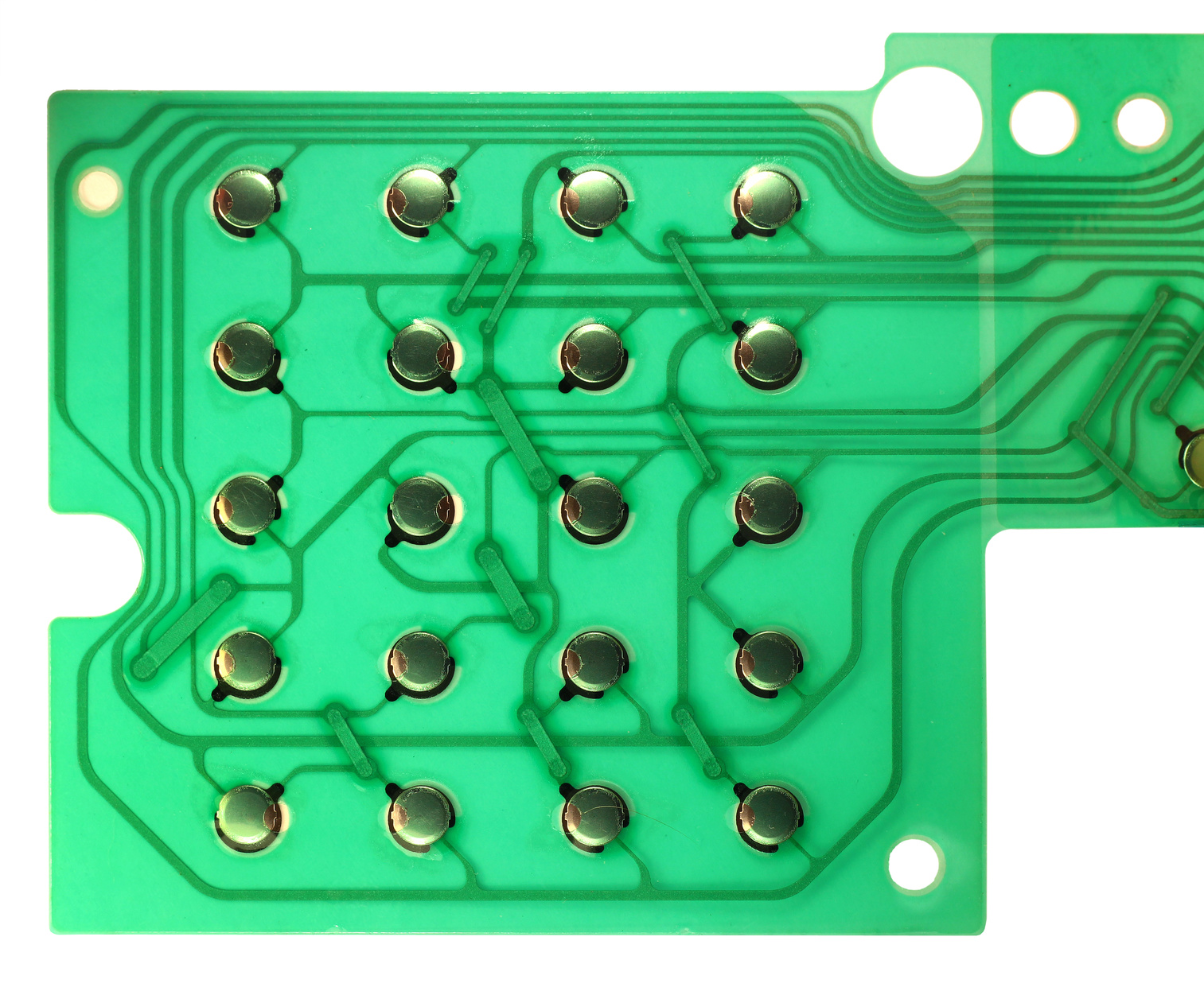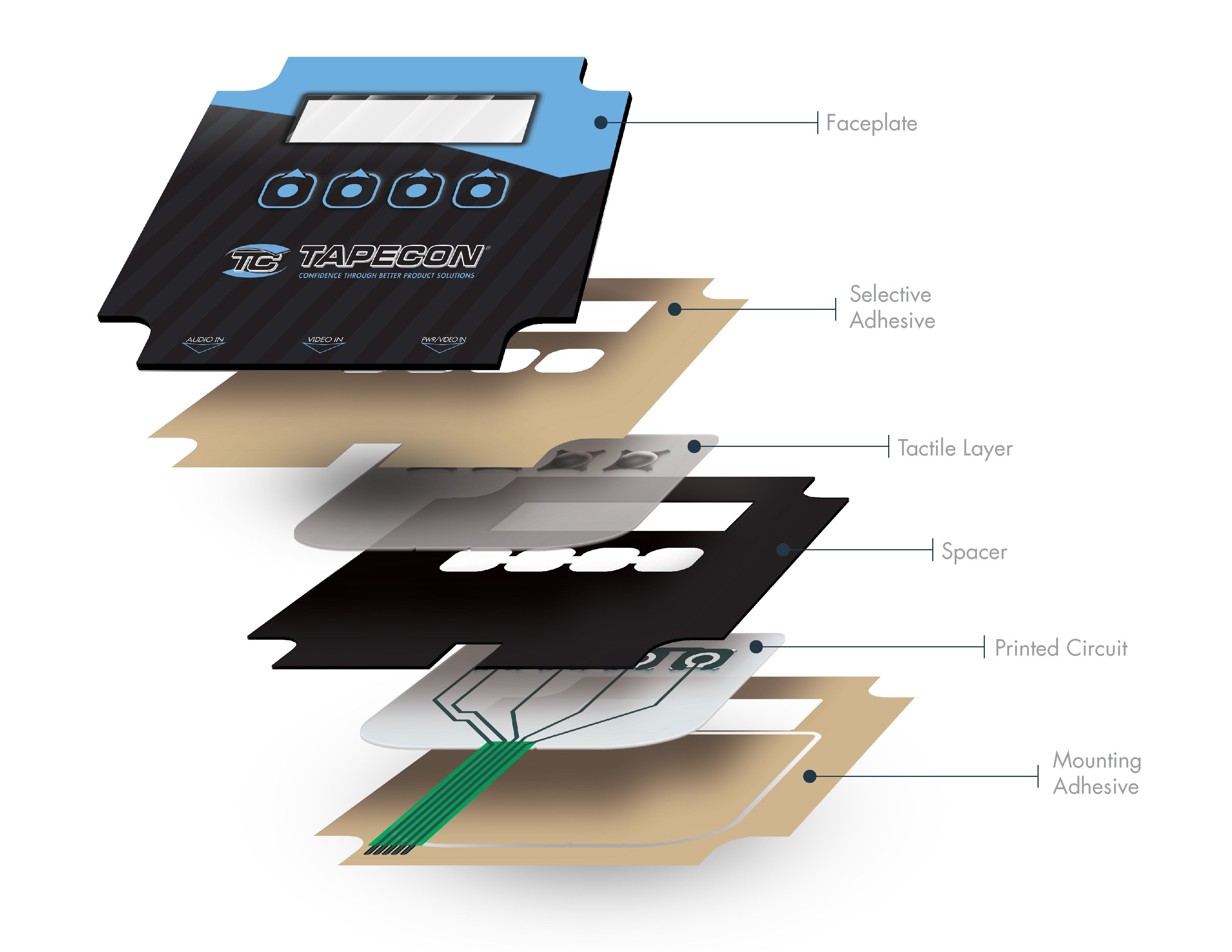Everything About Membrane Change: Recognizing Its Style and Performance
When you consider the control user interfaces in contemporary devices, membrane layer buttons commonly enter your mind. These elements are greater than just buttons; they mix layout and capability seamlessly. Recognizing just how they function and what makes them effective can change your point of view on day-to-day electronic devices. There are nuances to their layout and performance that you may not be aware of. Let's explore what collections membrane layer changes aside from various other control systems.
What Are Membrane Layer Switches?

Their seamless nature makes them simple to clean and immune to dust and wetness, a vital feature in several atmospheres. Membrane buttons can also be personalized pertaining to shape, dimension, and graphics, enabling suppliers to develop special interfaces tailored to specific products. Plus, they're lightweight and slim, which helps in reducing the total mass of tools. Overall, membrane layer switches play a significant role in improving user experience across a wide variety of applications.
How Membrane Layer Changes Job
When you press a trick on a membrane switch, it turns on an uncomplicated yet reliable mechanism. membrane switch manufacturer. The top layer, typically made of flexible product, pushes down onto a conductive layer beneath it.
You'll notice that the tactile feedback varies based on the switch design, offering either a soft click or a more obvious action. When you release the secret, the membrane returns to its initial position, reopening the circuit and quiting the signal. This process happens virtually instantly, ensuring a responsive individual experience.
Membrane layer switches are popular because of their sturdiness and resistance to dust and dampness, making them optimal for various applications, from household home appliances to medical gadgets. Recognizing this operation assists you value their widespread usage.
Key Parts of Membrane Layer Switches
Comprehending the key parts of membrane layer switches is fundamental for understanding their functionality and design. The safety layer shields against ecological variables and put on, prolonging the switch's life-span. By comprehending these parts, you'll gain understanding into just how membrane switches over run and their importance in different applications.
Products Utilized in Membrane Layer Switch Over Style
The efficiency and longevity of membrane layer changes greatly rely on the materials used in their layout. You typically come across polyester and polycarbonate as primary substrates as a result of their exceptional stamina and flexibility. These materials withstand scratches and chemicals, making them suitable for demanding atmospheres.
The conductive layers often make use of silver or carbon, picked for their integrity and conductivity. membrane switch manufacturer. Silver provides exceptional efficiency, while carbon is a cost-effective choice. For the overlay, you could take into consideration a matte or shiny finish, depending on your visual requirements and individual experience
Adhesives play a vital duty also; they bond layers securely and ensure longevity. Make sure to select adhesives that stand up to ecological factors like temperature and humidity. Do not ignore the relevance of an excellent printing technique for graphics, as it enhances both capability and visual charm. Picking the appropriate products will certainly ensure your membrane switch stands the test of time.
Style Considerations for Membrane Layer Switches
While creating membrane buttons, it's crucial to take into consideration numerous aspects that influence their performance and customer experience. Begin by focusing on the format and button Full Article size; make sure they're intuitive and very easy to browse. Take into consideration the tactile feedback you want to provide-- will users need a noticeable click or a softer touch? In addition, assume regarding the materials you'll make use of, as they'll influence resilience and aesthetic appeals.
Confirm your style fits ecological variables, like dampness or temperature variants, which could impact performance. By meticulously taking into consideration these elements, you'll create a membrane button that enhances use and contentment.
Applications of Membrane Layer Buttons
Membrane layer buttons are flexible components found in various applications, from commercial tools to customer electronic devices. You'll see their influence in machines that call for durable interfaces and in gadgets that benefit from streamlined designs. Recognizing these applications assists you value the performance and functionality of membrane layer buttons in day-to-day modern technology.
Industrial Tools Use
When you're looking to enhance the performance of industrial equipment, membrane buttons supply a dependable solution that incorporates durability with easy to use design. These buttons are best for extreme atmospheres, supplying resistance to dust, dampness, and chemicals. You'll locate them in control panels for manufacturing makers, heating and cooling systems, and medical tools, where accuracy and responsiveness are important. Their reduced account indicates they fit effortlessly into numerous devices, saving useful space while preserving convenience of usage. With customizable graphics and backlighting alternatives, you can create an user-friendly interface for drivers, improving efficiency and security. And also, their long life expectancy decreases upkeep expenses, making them a smart investment for your commercial applications. Embrace membrane layer switches to streamline your operations and improve general performance.
Consumer Electronic Devices Assimilation
In the domain of consumer electronics, membrane buttons play an important role in enhancing individual communication and gadget performance. Membrane layer buttons also guarantee longevity and resistance to dirt and moisture, expanding the lifespan of your electronics. By selecting membrane buttons, you improve not just the capability yet additionally the design of your devices, making day-to-day interactions smooth and pleasurable.
Benefits and Disadvantages of Membrane Switches
While membrane layer buttons supply a series of benefits, they likewise include some downsides that you must think about. One significant advantage is their small layout, making them excellent for space-constrained applications. They're likewise cost-effective, offering a sturdy option with a low manufacturing cost. In addition, their seamless surface is simple to tidy, enhancing health in atmospheres like medical facilities.

Nonetheless, there are negative aspects. Membrane layer buttons can have a much shorter life expectancy compared to mechanical buttons, especially under heavy usage. They can likewise be less tactile, which could impact user feedback throughout procedure. Moreover, if harmed, fixing them can be difficult and usually requires total substitute. Ultimately, their level of sensitivity to severe temperatures and environmental problems might restrict their efficiency in specific setups. Balancing these pros and disadvantages will certainly help you identify if membrane layer switches are the appropriate fit for your project.
Frequently Asked Questions
Exactly How Long Do Membrane Switches Over Generally Last?
Membrane switches commonly last between 5 to 10 years, depending upon use anonymous and ecological conditions. You'll intend to examine elements like wear, exposure to moisture, and temperature level changes to evaluate their long life properly.
Can Membrane Layer Switches Be Custom-made for Particular Designs?
Yes, you can customize membrane layer buttons to fit certain designs (membrane switch manufacturer). You'll have the liberty to choose colors, forms, and formats that match your project's requirements, ensuring they mix perfectly with your total aesthetic
What Is the Cost Array for Membrane Layer Change Production?
The cost range for membrane layer button manufacturing typically falls in between $1 and $10 per unit, depending on aspects like layout complexity, quantity, and materials. You can obtain quotes from producers to discover the most effective alternative.

Are Membrane Changes Water Resistant or Immune?
Membrane layer buttons can be made to be waterproof or resistant, depending on materials used and building approaches. If you require them for damp settings, assure you define those requirements during the design procedure.
Just How Do Membrane Changes Compare to Standard Switches?
Membrane switches are normally thinner and more versatile than traditional switches, offering a streamlined layout. They're usually less complicated to clean and integrate, but might not provide the content tactile responses you're used to with mechanical choices.
Final thought

 Jason J. Richter Then & Now!
Jason J. Richter Then & Now! Robert Downey Jr. Then & Now!
Robert Downey Jr. Then & Now! Romeo Miller Then & Now!
Romeo Miller Then & Now! Kelly Le Brock Then & Now!
Kelly Le Brock Then & Now! Naomi Grossman Then & Now!
Naomi Grossman Then & Now!